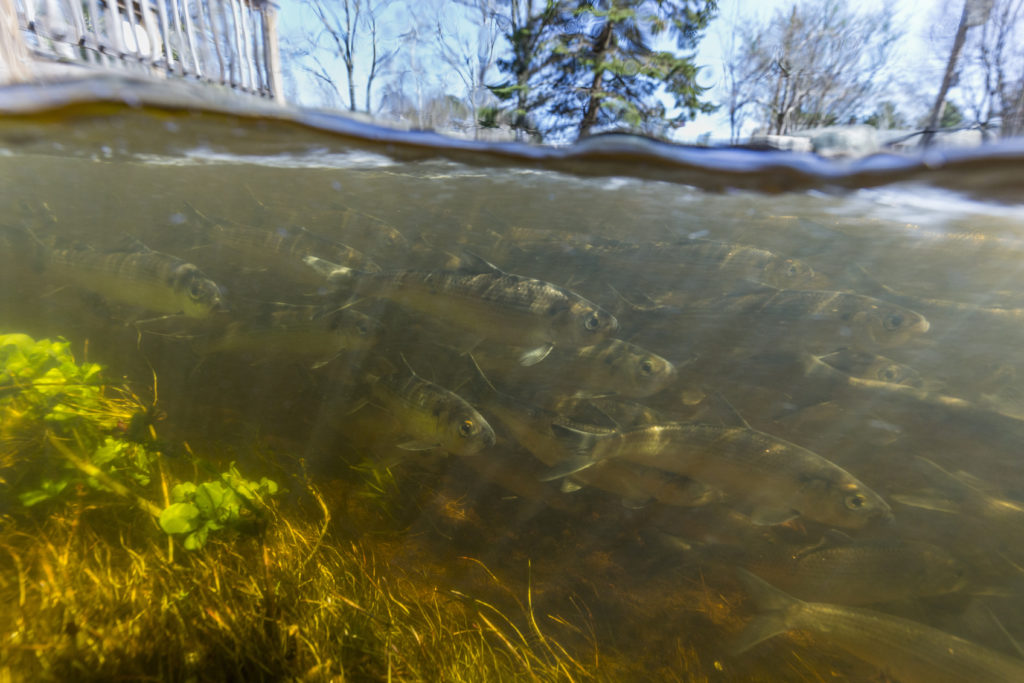
Our region is recognized around the world as the location of the first Thanksgiving feast. There were numerous inhabitants on the South Shore before the Mayflower arrived, including the Mattakeeset. Descendants of the Massachusett Indians, the Mattakeeset settled on the southern edge of Massachusett territory, and just north of the Wampanoag, in what is now Pembroke. The Mattakeeset, and their Wampanaog neighbors, called the area the “Place of Many Fish”, and depended on the Indian Head River and Herring Brook for their abundant runs of herring, alewife and salmon. The bounty found in rivers such as the Indian Head and Herring Brook sustained these native peoples and became important to the first colonists as well. Want to learn more fun facts? Follow us on Instagram.
In 2018 the South Shore had three runs with over 300,000 fish – Back River, Weymouth; Herring Brook, Pembroke; and Monument River, Bourne; and one with over 200,000 fish – Town Brook, Plymouth, based on data compiled by the Massachusetts Division of Marine Fisheries. Statewide, count data show that while there are strong runs in each of the different regions of the state, not all runs are reaching these higher population estimates and in some regions like the South Coast, the larger runs are staying stable and not continuing to increase. The Massachusetts River Herring Count Index includes data from 1996 to present and integrates count data from four rivers with strong runs and long-term data records – the Nemasket River and Mattapoisett River on the South Coast and the Monument River and Back River on the South Shore. The index reached a low in 2005, when the river herring moratorium was instituted, and has been slowly increasing since then with an anomalously low year in 2017. However, Herring Brook in Pembroke has been steadily increasing since a volunteer count of ~39,000 in 2014, after a new fish ladder was installed. The 2018 volunteer count population estimate was ~120,000, roughly half the number of fish counted with the electronic counter also installed at the site (and the source of the aforementioned 300K+ count). This suggests that the Pembroke run likely has fish moving upstream at dawn, dusk, and overnight when volunteers are not present.
River Herring populations that early Americans would have experienced were much greater than those we see today. Since 1950, data on herring catch has shown a precipitous decline in their populations. There are many reasons for their decline including the damming of our rivers, overfishing, and streamflow modification through water withdrawals and diversions. To make our rivers and oceans as bountiful and full of fish as they were in the past, we are working to remove unneeded dams and ensure proper streamflow in our local rivers and streams. Watch our movie “Letting the Rivers Flow” to find out more!
